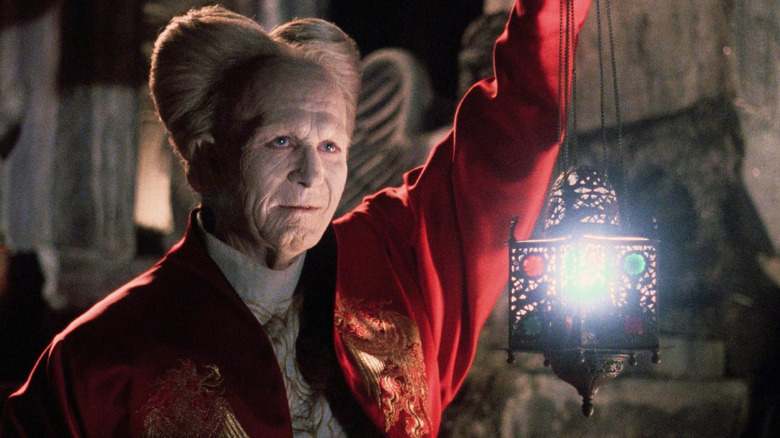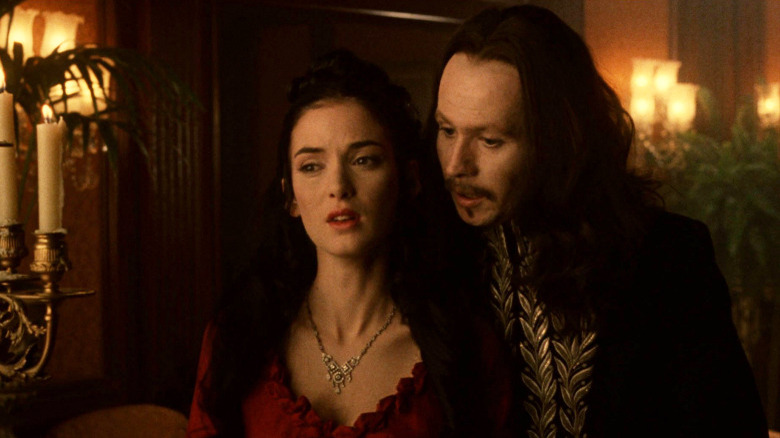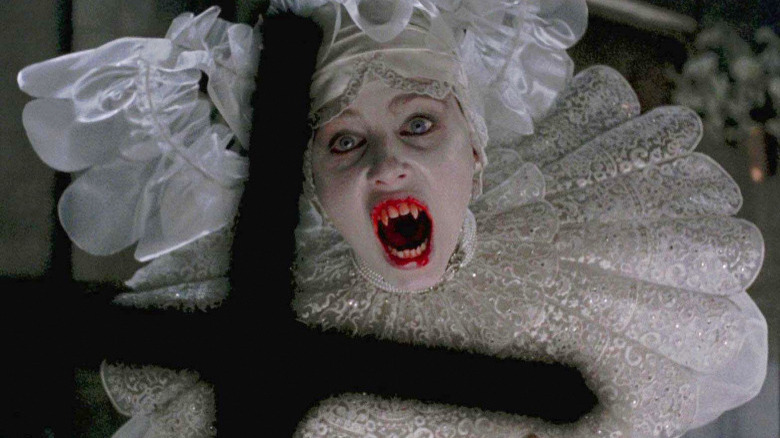Year Of The Vampire: Bram Stoker’s Dracula Puts The 'Opera' In Gothic Horror Opera
Posted by admin on

(Welcome to Year of the Vampire, a series examining the greatest, strangest, and sometimes overlooked vampire movies of all time in honor of "Nosferatu," which turns 100 this year.)
"Dracula" movies are commonly associated with Universal Pictures and Hammer Film Productions, and with valid reason: they're responsible for many of the most famous big screen adaptations of Bram Stoker's landmark 1897 novel that've come out over the last 100 years. Yet one of the best and certainly the most operatic cinematic interpretations of Stoker's vampire horror classic, "Bram Stoker's Dracula," was released in 1992 by Sony. Yes, as in the House of Spider-Man.
Looking back with the benefit of hindsight, "Bram Stoker's Dracula" landing at Sony was a blessing. It freed up director Francis Ford Coppola — who joined the film after star Winona Ryder gave him the script by James V. Hart ("Hook"), which she used as an olive branch after dropping out of "The Godfather Part III" — to go wild with his vision for the movie, as opposed to feeling like he had to adhere to the stylistic tropes of "Dracula" films past. And boy did he do just that, delivering a visually extravagant work of gothic horror-romance where every cent of the movie's $40 million budget (not adjusted for inflation) is visible onscreen.
Take, for example, the film's prologue. In its first five minutes, "Bram Stoker's Dracula" depicts Vlad Dracula's (Gary Oldman) vicious campaign against the Ottoman Empire as though it were a violent shadow puppet show unfolding against a blood-soaked sky. Where Draculas past mostly wore black cloaks and capes, Oldman's Vlad dons vibrantly red armor that recalls the muscles of the human body. When the movie jumps ahead 400 years to the late 19th century, we see the older Dracula hasn't lost his taste for the flamboyant. He now spends his days trotting around in a satin coat and robe, his snow-white hair bound tightly into two massive buns atop his head.
What It Brought To The Genre

One could argue "Bram Stoker's Dracula" brought style to the vampire genre and not much else — but what style it brought! It's a film that's full to the brim with sumptuous imagery, from the Oscar-winning costumes by Eiko Ishioka (many of which are museum-worthy works of art) to the striking in-camera and on-set visual effects overseen by Coppola's son, Roman Coppola. The movie also tips its hat to "Dracula" adaptations past, using iris transitions and shot compositions that call back to the German Expressionism of "Nosferatu: A Symphony of Horror." Even the famous moment where Dracula's shadow takes on a life of its own and threatens to strangle Jonathan Harker (Keanu Reeves) makes for a nice homage to Count Orlok's profile slinking up a set of stairs in F.W. Murnau's unauthorized silent film version of Stoker's novel.
Much like Wes Anderson's films, however, you can't divorce the style of "Bram Stoker's Dracula" from the substance. This is a gothic tale of damned souls and a Romance (with a capital "R") that spans centuries. It required a theatrical sensibility across the board, from the cinematography and music (you could pair Michael Ballhaus' menacing central theme with most anything, and it would feel dramatic and ominous) down to the script and acting. What's more, Coppola and his big-name cast know better than to wink at the audience. None of the movie's outlandishness would land if Ryder, Oldman, and their co-stars didn't play it all with a straight face. Even Reeves, for all the flak he's gotten for his turn as Mr. Harker, takes everything here seriously. (The real problem is that Reeves was miscast in a role that simply didn't fit his strengths as an actor.)
The Legacy Of Bram Stoker's Dracula

"Bram Stoker's Dracula" both is and isn't an easy target for parody. How can you make fun of something that goes over the top with such skillful precision? It's why the better lampoons of Coppola's film are those that merely remix its iconography for comedic effect (see: the "Bart Simpson's Dracula" segment from "The Simpsons: Treehouse of Horror IV"), instead of trying to top its inherent silliness (see: the notorious critical and box office flop that was Mel Brooks' 1995 spoof "Dracula: Dead and Loving It").
Far from being limited to the realm of mockery, "Bram Stoker's Dracula" has changed the way vampire tales are told since it came out. The genre has only become more colorful and imaginative with its storytelling — not to mention, Dracula's attire — than it was in the 70 years between the film's release and "Nosferatu." One could even draw a line between its sweeping love story and the swooning teen romance at the heart of "Twilight." (A discussion unto itself, no doubt.) You can also thank Coppola's "Dracula" movie for inspiring Guillermo del Toro, who not only featured some of its props in his At Home With Monsters exhibition, but also clearly took more than a few cues from its production design and tone for his own gothic horror-romance, "Crimson Peak."
Beyond that, "Bram Stoker's Dracula" led to a short-lived trend of costly prestige drama adaptations of classic horror novels in the '90s, all of which saw lesser returns both creatively and commercially. (Case in point: "Mary Shelley's Frankenstein," a 1994 film directed by and starring Kenneth Branagh that, for all its flaws, is worth a look.) It just goes to show what a rare, strange beast Coppola's take on Stoker's source material remains to this day.
Read this next: The 12 Best Vampire Movies Of All Time
The post Year Of The Vampire: Bram Stoker's Dracula Puts the 'Opera' in Gothic Horror Opera appeared first on /Film.
